Australia is a vast place. The country comprises almost an entire continent all by itself, sprawling over about 7.68 million sq km (2.97 million sq miles), making it about the same size as Europe. That’s big enough to have several distinct climates – from cool temperate to tropical – and three time zones. The natural landscapes are correspondingly diverse, ranging from red deserts to green rainforests and from sandy beaches to snow-clad mountains. Epic natural beauty is complemented by sophisticated cities, where all the pleasures of urban life are at hand – usually with beaches and national parks on the doorstep.
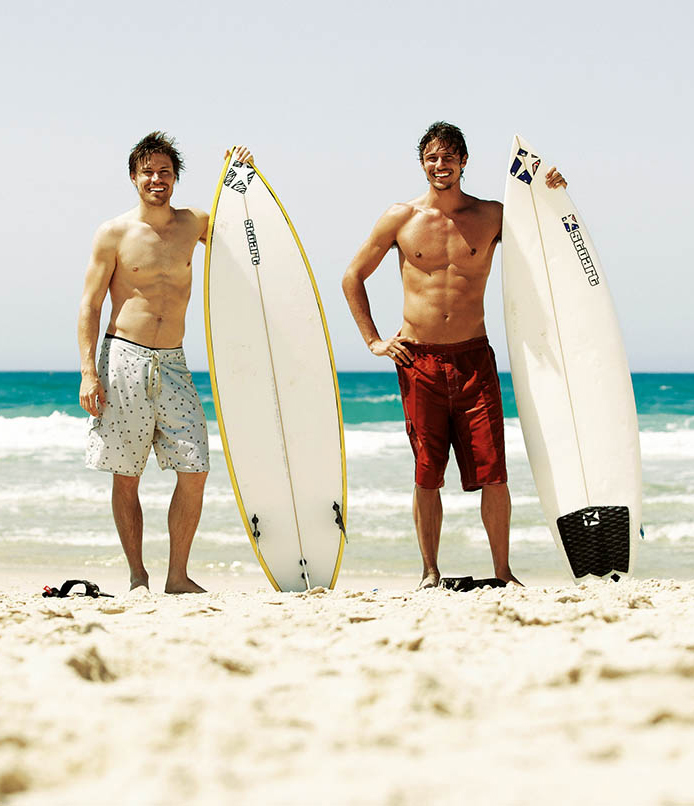
Surfers on the Gold Coast
Tourism Australia
The open door
In 1922, the novelist D.H. Lawrence wrote: ‘Australia is like an open door with the blue beyond. You just walk out of the world and into Australia.’
Aussie Stereotypes
Perhaps because of its size and diversity, together with its isolation, Australia has been little known and even less understood for most of its history. A character in an Oscar Wilde play set in the Victorian era summed up the foreigner’s blurred impression of Australia: ‘It must be so pretty with all the dear little kangaroos flying about. Agatha has found it on the map.’
In many people’s minds, the land down under still consists of vague images: the Sydney Opera House, Bondi beach, the Great Barrier Reef, the unforgiving Outback, and all those bizarre Australian animals. It’s true that the kangaroo, the koala, the wombat, the platypus and the Tasmanian devil are unique to Australia, but there is much more to the country than this.
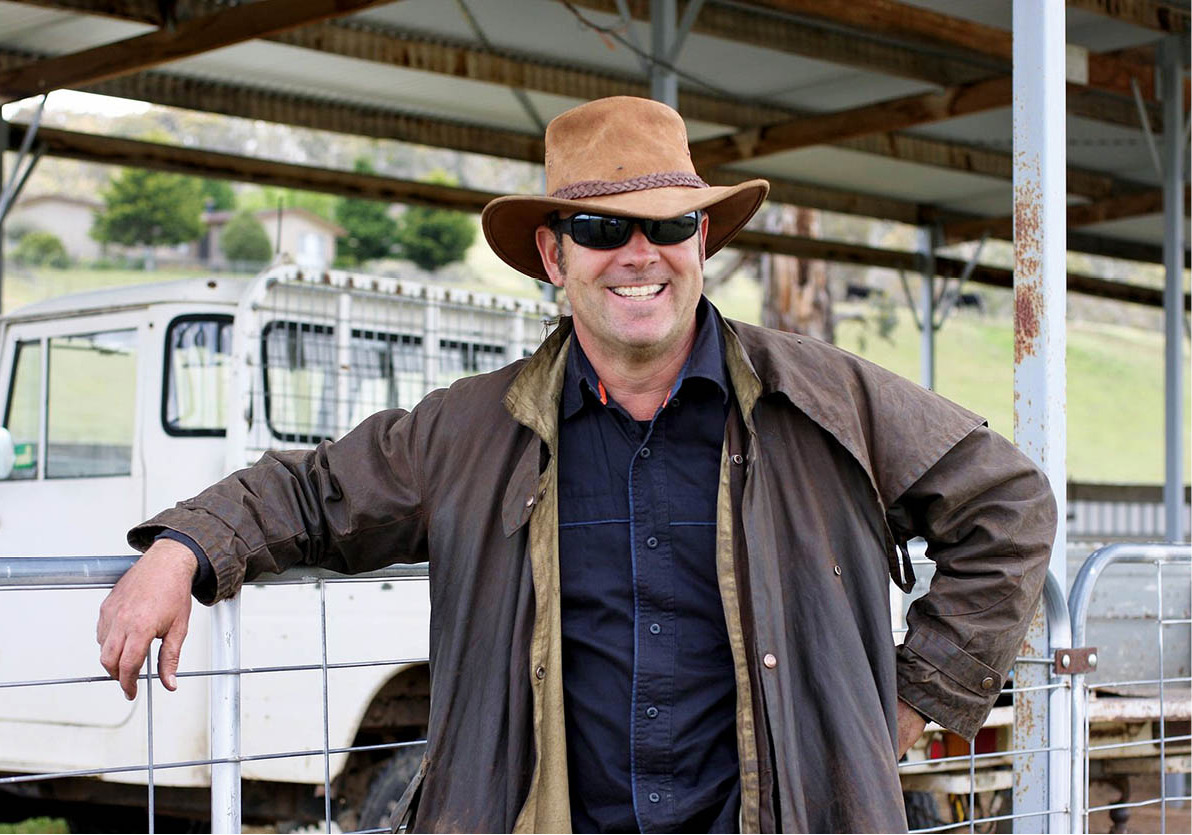
An Aussie bushman
123RF
And what of the human population? Australians tend to be perceived as a laid-back bunch, fond of sunbathing, surfing and swilling cold beer. And there are the Australian ‘types’: a stockman herding sheep beneath eucalyptus trees, or a tanned bushman prospecting in the stark landscape of the Outback. Like most clichés, there’s something to it. Statistically there is actually a sizeable obesity problem in Australia, but it remains very well hidden and most Aussies seem to relish the outdoor life. Many radiate health and either possess or admire tanned muscles. During the weekends, if they’re not actually at the beach, they are usually playing sport, listening to football or cricket on the radio, or they’re out in the garden barbecuing beef or seafood. To complete the picture, there’s typically an icy beer at hand to pacify the fiercest thirst. Australians may not be the world’s most insatiable beer drinkers, but they’re in the premiere league.
Prospectors seeking gold, opals or other minerals still roam the Outback, Australia’s remote, sparsely inhabited backcountry. In the wild northern ‘Top End’, enormous crocodiles stalk unwary prey, sometimes coming a little too close to civilisation – about 100 are removed from Darwin’s harbour every year. Remote cattle farms (‘stations’) are so big that stockmen conduct their roundups using helicopters. One of the stations is the size of Belgium.
However, these startling facts represent only part of the truth. Camping holidays or day-trips to national parks are as close as the overwhelming majority of Australians get to living in the bush. Australia is one of the world’s most urbanised countries, with over 90 percent of its population living near the coast in the 10 biggest cities. More than one Australian in five resides in Sydney (population 4.5 million). Melbourne is approaching the same size, with half a million fewer inhabitants. Other state capitals – Brisbane, Adelaide and Perth – account for most of the rest of the population.
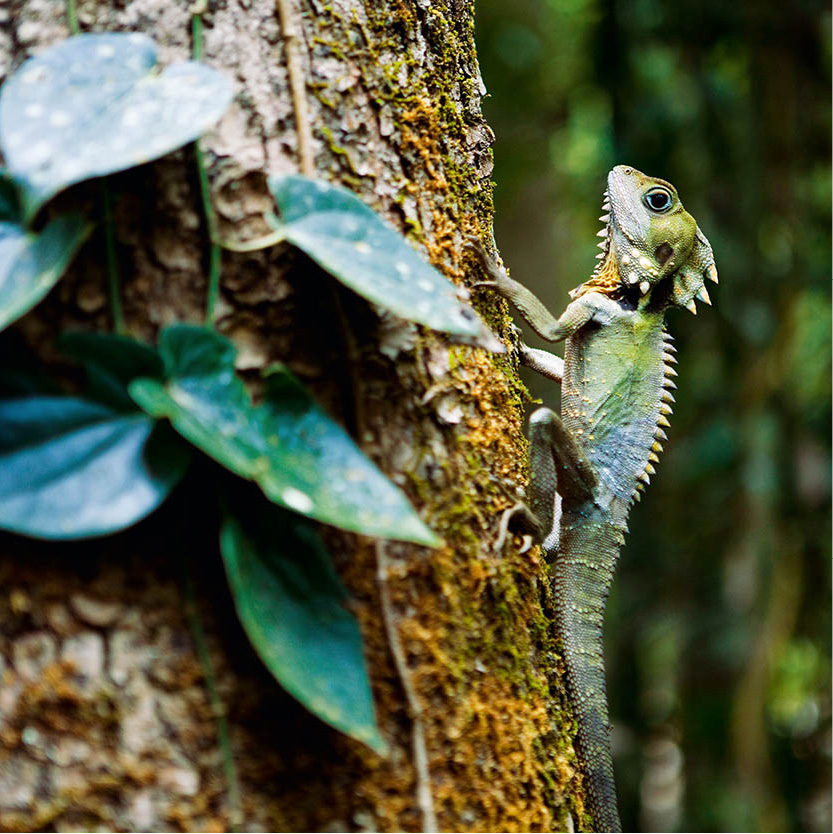
Australia’s wonderfully weird wildlife
Peter Stuckings/Apa Publications
For many people, Australia’s natural wonders, its odd wildlife and its far-flung open spaces still eclipse everything else. The vast and starkly beautiful Outback holds an almost hypnotic appeal. When the best-selling author Stephen King took a short break from writing and roared into Australia’s wide-open expanses on a motorcycle, he described his sense of awe: ‘If you stop, the silence is incredible. You feel very small; you can almost hear God breathing.’ Bear in mind that you don’t have to go as far as the Outback to find untouched nature. The Blue Mountains National Park, for example – a Unesco World Heritage Area – is only 90 minutes’ drive from central Sydney.
Some extraordinary wildlife wanders the continent. Australia has a virtual monopoly on monotremes, mammals that lay eggs. Among them are the waddling, spine-covered echidna and the platypus, a half-aquatic furry mammal with a duck-like bill.
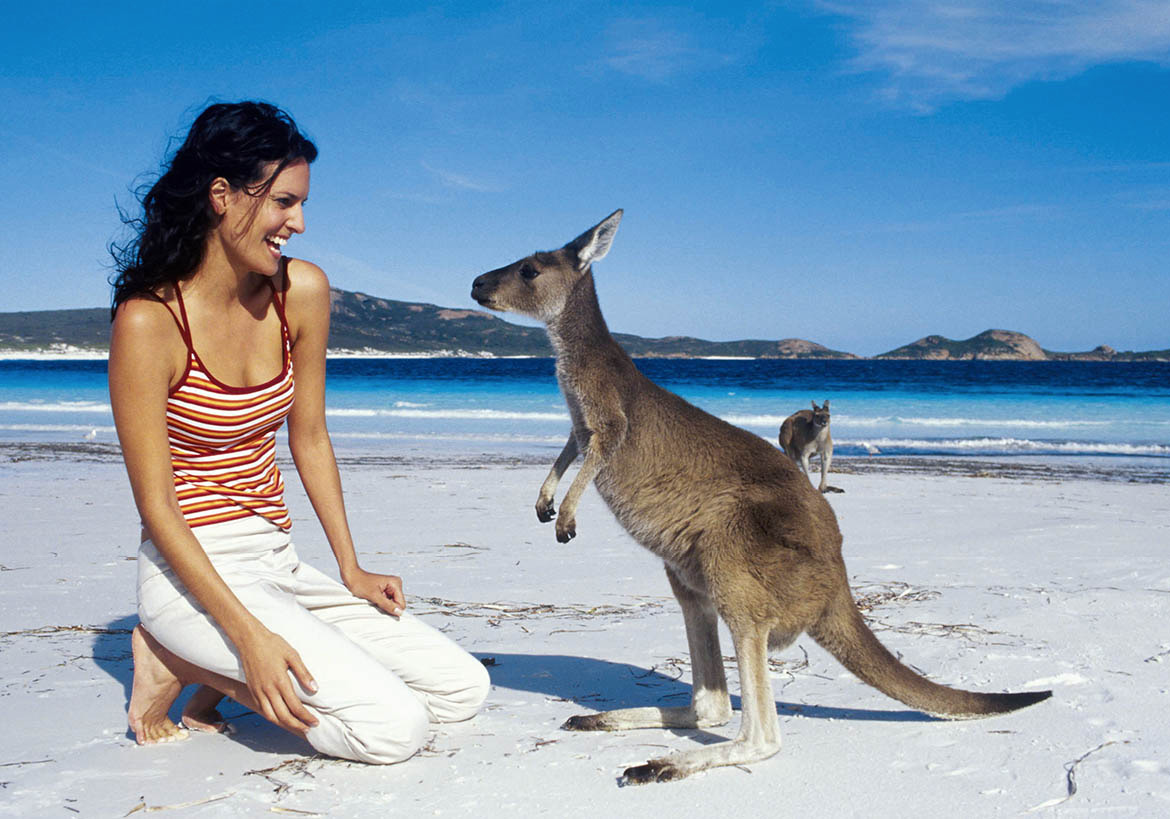
A friendly marsupial
Tourism Australia
Rather more familiar are the continent’s marsupials, equipped with pouches to solve the baby-sitting problem. Bounding across the landscape are numerous varieties of macropods (‘big feet’), from small wallabies to giant red kangaroos. Another marsupial, the languid, furry koala, eschews violent exercise, spending its days drowsing in the branches in a eucalyptus-induced haze. Its relative, the wombat – another vegetarian marsupial – prefers to burrow under stumps or logs, or in the banks of creeks. More commonly seen are possums, tree-dwelling marsupials that have colonised many suburban backyards, causing householders sleepless nights with their noisy nocturnal wanderings.
Birdwatchers here can count hundreds of species. Thrillingly colourful birds, such as the rainbow lorikeet, are as common as sparrows in other countries, and lyrical or humorous birdcalls provide a country music soundtrack every evening. These indigenous stars have names such as flowerpecker, honeyeater and kookaburra, but the favourite bird of crossword puzzlers – the emu – can’t sing or fly.
Unsurprisingly, Australia has some unique specialities in the reptile department, too, including 2-metre (6ft) goannas, exotic creatures like the frill-necked lizard and the bearded dragon, and the world’s largest crocodile, the salt-water croc, or ‘saltie’. For good measure, the island contains more species of venomous snake than anywhere else on earth.
A Continent Cut Off
Australia has been isolated from other continents since it split from the remnants of the southern super-continent, Gondwana, about 40 million years ago. Cut off from the evolutionary mainstream, plants and animals developed in ways that have engrossed generations of scientists and astounded millions of ordinary tourists.
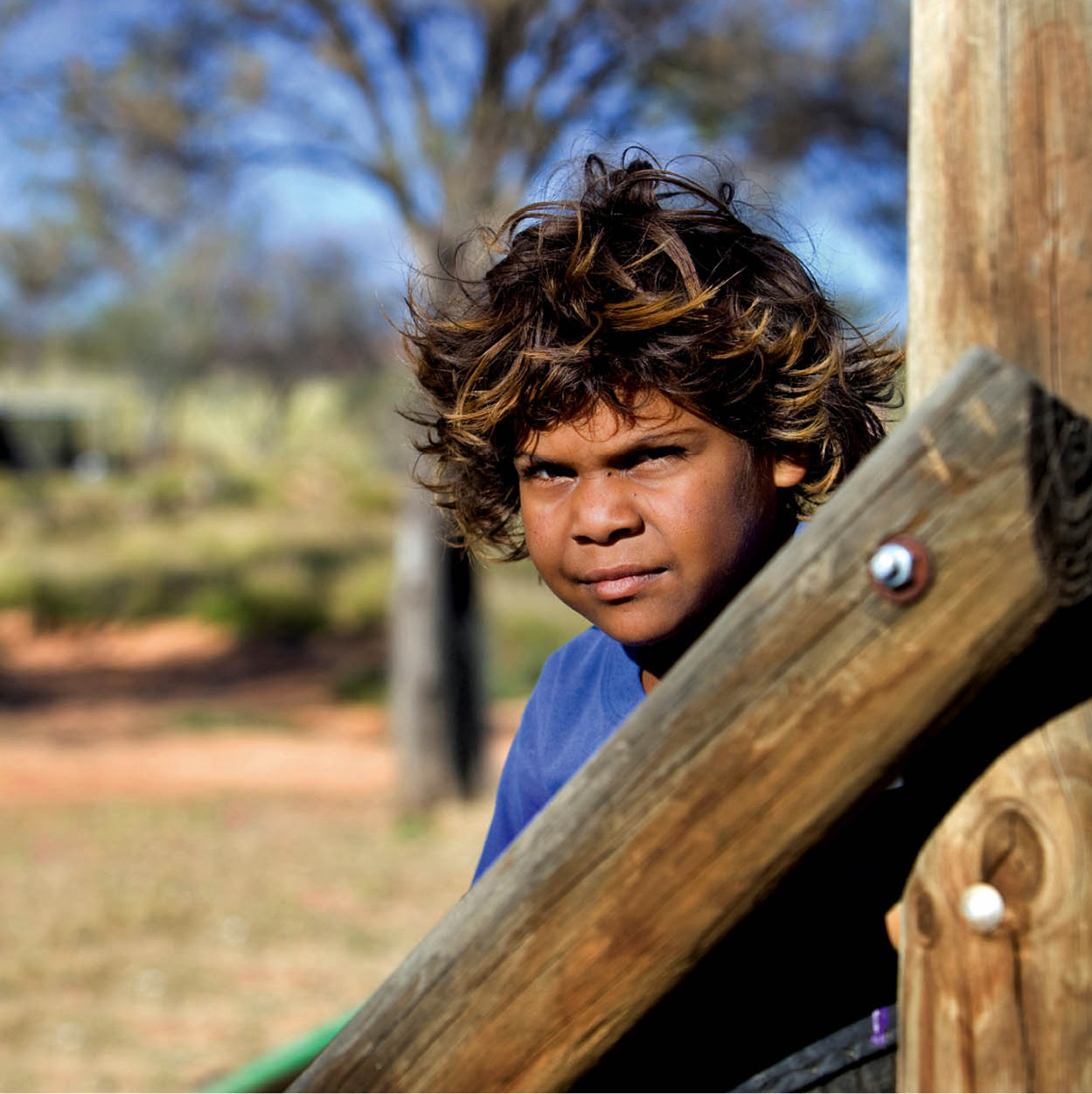
Aboriginal child
iStock
For millennia, the only humans sharing the continent with these animals were nomadic Aboriginal tribes. These first Australians are believed to have arrived from Asia, probably by boat, somewhere between 50,000 and 100,000 years ago. Australia’s Aborigines lived within tribal boundaries they believed had been created by their ancestors in a period called the Dreamtime. Aborigines built no permanent structures but lived in a manner that ensured their survival in a harsh environment.
Their lives changed little until European explorers began arriving in the 17th and 18th centuries. The Dutch may have been the first to arrive, but the colonial history of Australia began properly in 1770, when Lieutenant James Cook landed on Australia’s east coast and claimed all the territory he charted for King George III. Shortly after Cook’s arrival, the British decided Australia was an ideal place to send convicts and in 1787, Britain dispatched a fleet of soldiers and convicts to colonise Australia, the farthest-flung point of its Empire.
The Commonwealth of Australia
Since 1901, the six former British colonies of Australia have been an independent federal commonwealth with a British-style parliamentary system. Apart from the six states, there are also two territories, the Australian Capital Territory (ACT) and the Northern Territory. Australia’s Head of State is Queen Elizabeth II. She is represented by a Governor-General, who is nominated by the federal government and appointed by the Queen. The Prime Minister heads the federal government and is the leader of the party that holds the most seats in the lower chamber, the House of Representatives. The upper house is the Senate. The federal parliament is based in Canberra, a city founded in 1927. Like Washington DC, in the US, Canberra lies in its own administrative zone, the ACT. Each state and territory has its own government and leader, called the premier (states) or chief minister (territories).
In a relatively short time, the British Empire had casually seized the traditional lands of Australia’s hunter-gatherers and Aboriginal peoples were dispersed and massacred. Australia’s indigenous population (who now represent about two percent of the country’s population) did not gain the vote until 1962 and were not included in Australia’s official census until 1967.
The founding of modern Australia has left its mark on the national psyche, although the impact is fading. Australians were once notably defensive about their country, asking foreigners what they thought of it, then waiting anxiously for the answer. These days, Aussies are more relaxed about such matters. The descendants of convicts have long since been outnumbered by the descendants of free settlers, but if Australians can prove convict ancestry they do so eagerly – it’s considered a mark of prestige.
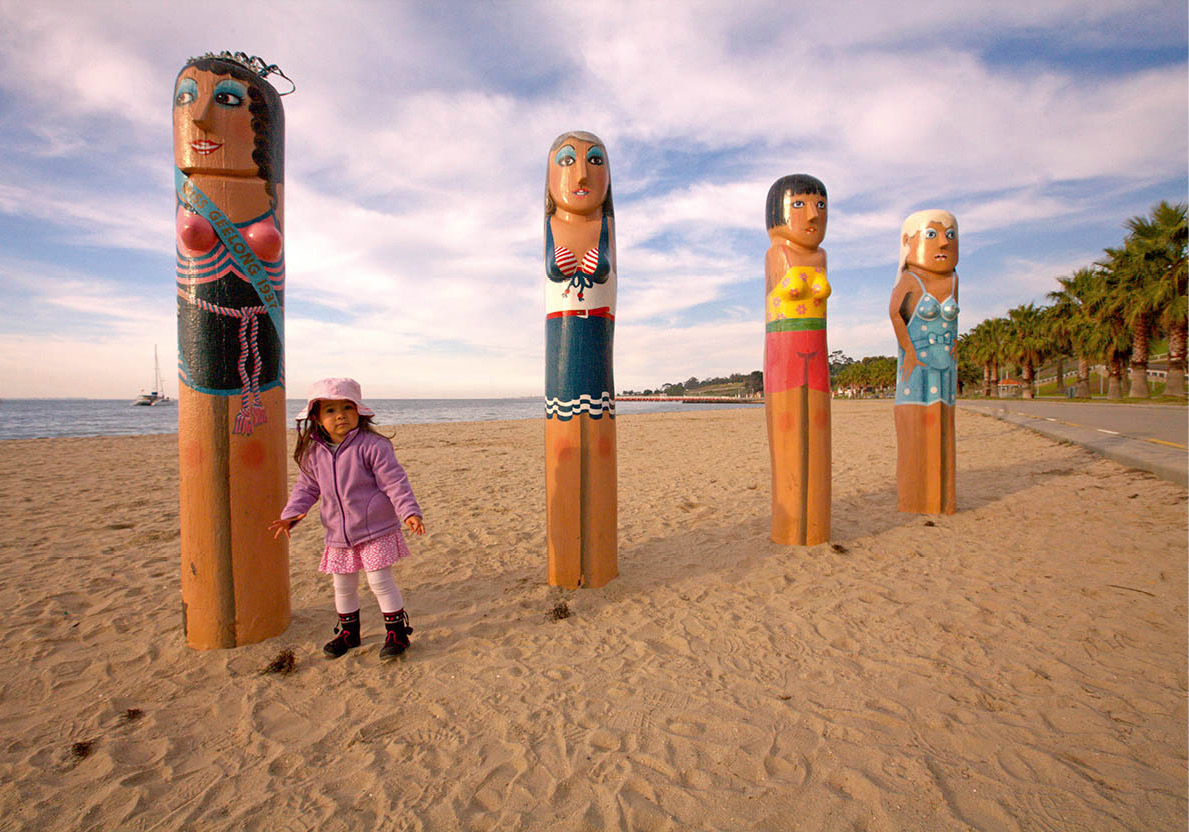
Geelong, in Victoria, is famous for its Baywalk Bollards
Virginia Star/Apa Publications
The country has much to be proud of. In little more than 200 years, a tiny European settlement founded in conditions of brutality, servitude and privation has prospered and transformed itself into a dynamic modern nation whose economy places it in the top 20 OECD countries in terms of gross domestic product. Tourism is one of the largest earners and a major employer, directly accounting for 543,600 jobs, or almost six percent of Australia’s workforce.
Immigrant nation
In Australia, four out of 10 people are immigrants or first-generation children of immigrants.
Australia is a long way from its traditional northern-hemisphere allies: 9,720km (6,000 miles) from the US and 17,820km (11,000 miles) from Britain. But non-stop or one-stop flights make the going relatively easy. More distant in cultural terms are Australia’s nearest neighbours, Indonesia and Papua New Guinea, a short flight to the north. The Asian connection is vitally important, however, both politically and economically. A look at the faces on any Australian city street shows the vastly increased flow of immigrants from South and Southeast Asia.
Since the early 1980s, cultural intermingling has revolutionised the national diet. Urban Australia now enjoys a collage of culinary influences with fresh, high-quality ingredients. All the state capitals have lively café scenes and at least one nearby wine-producing area, giving you the chance to sample wines at the cellar door. Climatic diversity allows Australia to produce both warm- and cool-climate wines and grow tropical fruit such as rambutans, custard apples, mangoes and lychees, as well as avocados, strawberries, blackberries, apples, pears, oranges and mandarins.
In the capital cities, you’ll have no trouble finding restaurants serving excellently prepared cuisine from as far afield as Thailand, Mexico, Cambodia, Japan, France, Hungary, Spain, Lebanon, Turkey or Italy. In smaller towns, the choice is more limited, and you may have to settle for a meat pie, fish and chips or chop suey.
Australia’s geographical superlatives are clear-cut. It is the world’s biggest island. More accurately, it is the smallest and least populous (about 23 million inhabitants) of the continents, and the only one housing a single nation. Australia measures about 4,000km (2,500 miles) east to west and 3,200km (2,000 miles) north to south. It is 24 times the area of the British Isles.
The Great Dividing Range, stretching almost the entire length of the eastern continent, and with a maximum elevation of just over 2,000 metres (6,500ft), separates a narrow fertile strip on the coast from the Outback. West of the range, the country becomes increasingly flat and dry. Habitation becomes sparse and after thousands of kilometres the horizon is broken only by occasional mysterious protuberances including Uluru (Ayers Rock) and Kata Tjuta (the Olgas), and starkly beautiful mountains such as the Flinders and MacDonnell ranges. Then, in the far south of Western Australia, a repeat of the mountain range-coastal strip pattern heralds the Indian Ocean.
While Outback Australia includes regions of great natural beauty, much of the interior is arid, consisting of immense deserts and saltpans. Only seven percent of the country is arable, which is why the settlement pattern has been so different from that of the US, and why the population is so much smaller. Non-arable land is not necessarily unproductive: under the surface lie bauxite, coal, iron ore, copper, tin, silver, uranium, nickel, tungsten, lead, zinc, diamonds, natural gas and oil. Mining is one of Australia’s biggest industries, accounting for about seven percent of the country’s GDP.
A Variety of Vegetation
Australia is home to some of the world’s best-preserved wilderness areas. Unesco’s World Heritage List currently includes a total of 15 Australian regions, ranging from the Great Barrier Reef and the Tasmanian Wilderness to the Wet Tropics of Queensland and Uluru–Kata Tjuta.
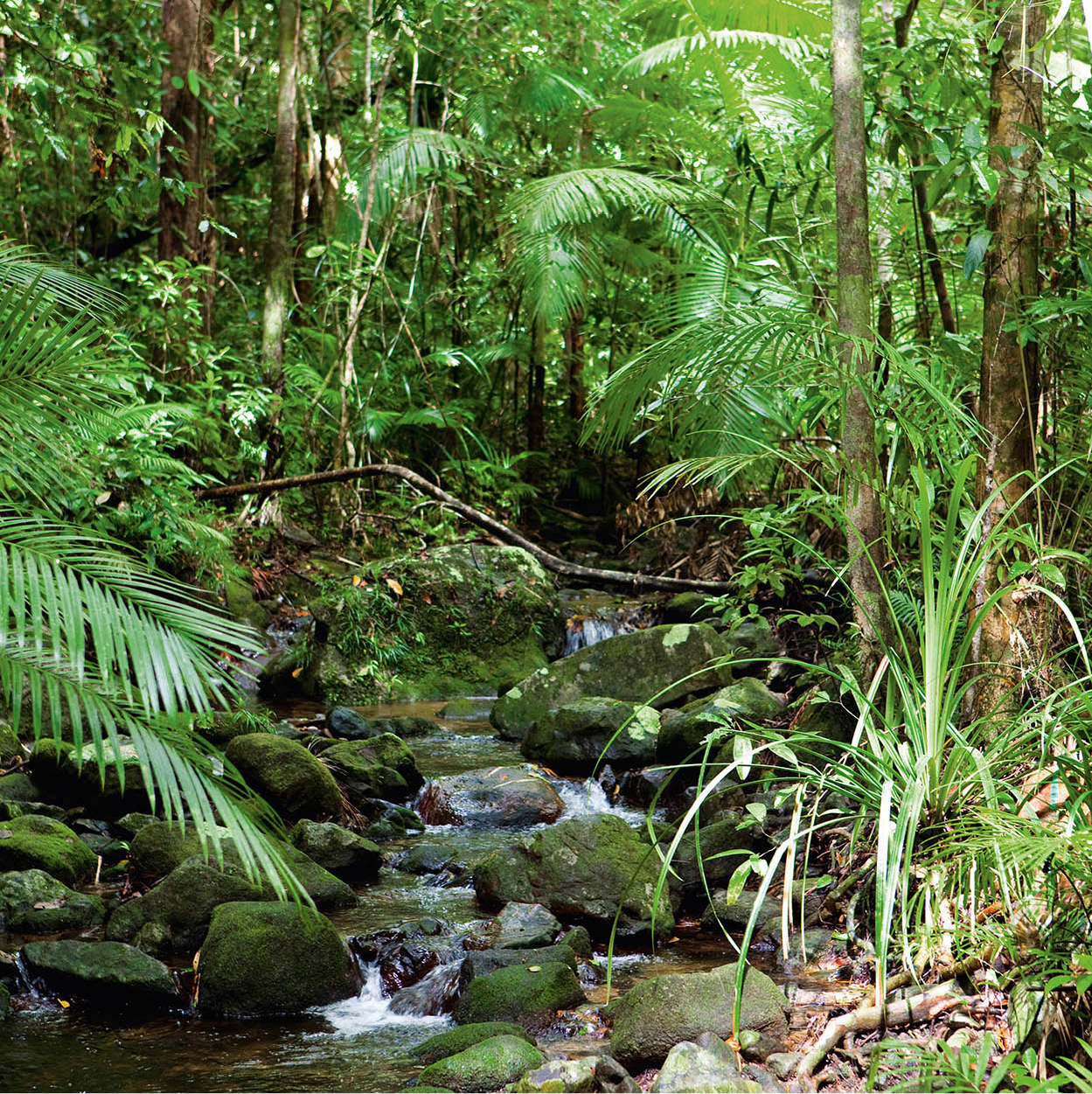
Lush palm forest
Peter Stuckings/Apa Publications
The rainforests of Australia – healthy, vast and diverse – form one of the world’s best-preserved wilderness areas. From the lush, dense jungles of tropical North Queensland, the rainforest region extends south to the planet’s last great stand of temperate rainforest – the cool, moist forests of Tasmania. Apart from their sheer beauty, Australia’s rainforests contain about half of all Australian plant species, including ‘primitive’ plant families providing direct links with the birth of flowering plants 100 million years ago.
At almost all Australian latitudes you’ll see hardy trees of two main families. There are more than 600 species of flowering acacia (including the golden wattle from which Australia derives its national colours) and over 500 types of eucalyptus, ranging from low, stunted, scrub-like bushes to the great towering varieties of the highland forests. There are ghost gums, so-called because under the light of the moon they appear silvery-white, and rock-hard ironbarks, capable of blunting the toughest timber saws.
Australia is the world’s flattest continent, although the nation’s highest summit, Mt Kosciuszko (elevation 2,228 metres/7,308ft), is almost as high as Mexico City. You can ski in the Snowy Mountains of New South Wales from June to August/September. The country’s first ski club, the Kiandra Pioneer Ski Club, was founded in 1870 – two years before the first clubs in the United States.
Australia is the driest inhabited continent, with only one river (the Murray) worthy of world ranking. The country’s coastline is 36,735km (almost 23,000 miles) long and includes many sweeping beaches where you can wander for a whole day and see no one. You can dip a toe (or a surfboard) in legendary waters, among them the Coral Sea, the Timor Sea, the Pacific Ocean, the Indian Ocean and the Southern Ocean.
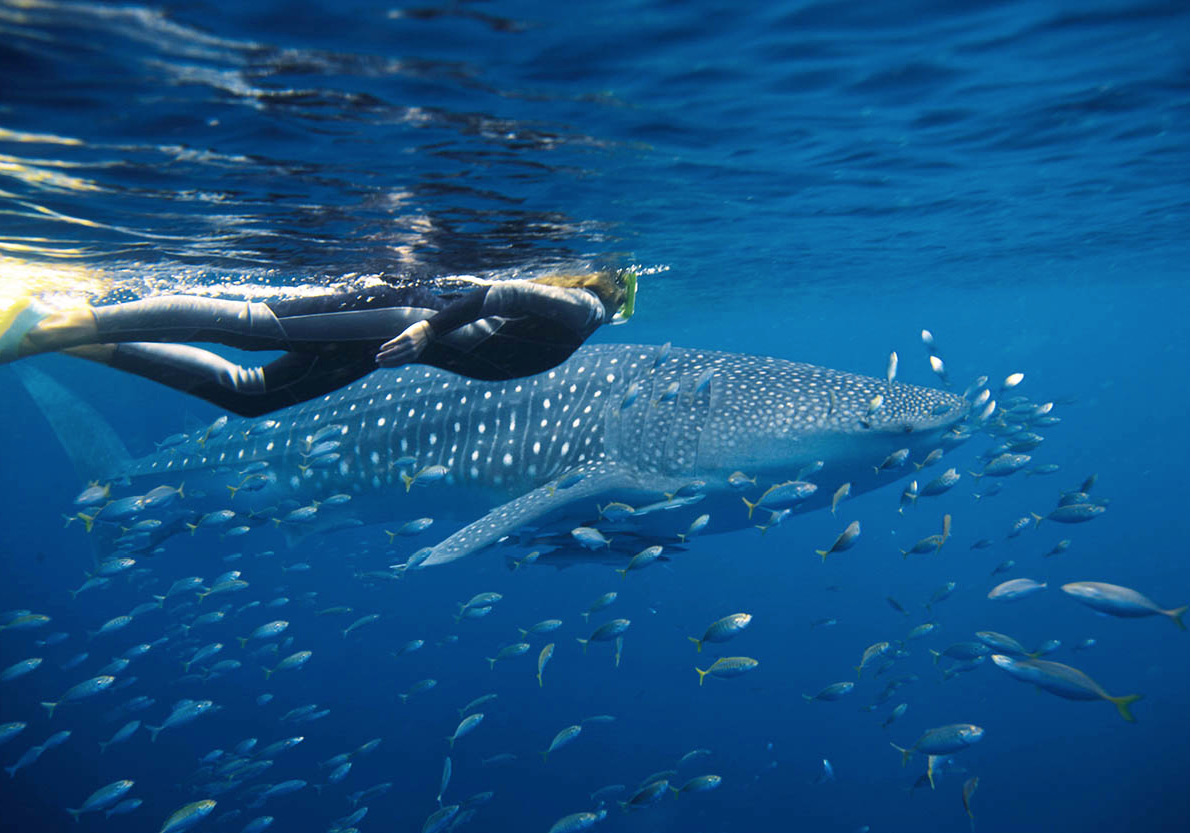
Snorkeller with a whale shark, Ningaloo Reef, Western Australia
Tourism Australia
Underwater Wonders
Some of Australia’s most colourful sights exist under the sea. Divers visit Australian waters to admire the sort of fish you see in a collector’s tropical tank – only 10 times bigger. Gorgeous angelfish, clown anemone fish and moorish idols glide past the enthralled skin diver’s mask. Big-mouthed sharks, sting rays and venomous scorpion fish may also be seen.
The reef
The Great Barrier Reef is home to more than 1,500 species of fish as well as whales, dolphins, turtles and thousands of different crustaceans.
For enthusiasts of underwater spectacles, the most exciting place in the world is the Great Barrier Reef. This 1,944km (1,200-mile) miracle – a living structure of coral – thrills the imagination in its immensity and in the intricate detail of brightly hued organisms shaped like antlers, flowers, fans or brains. It’s the world’s largest living thing. The most sublime tropical fish congregate here, too.
The reef, one of Australia’s top tourist destinations, has become ever more accessible with a choice of airport hubs, fast catamarans and permanent pontoons. Australia’s developed air transport system puts the whole continent within reach: beaches and ski resorts, dynamic cities and Outback towns.
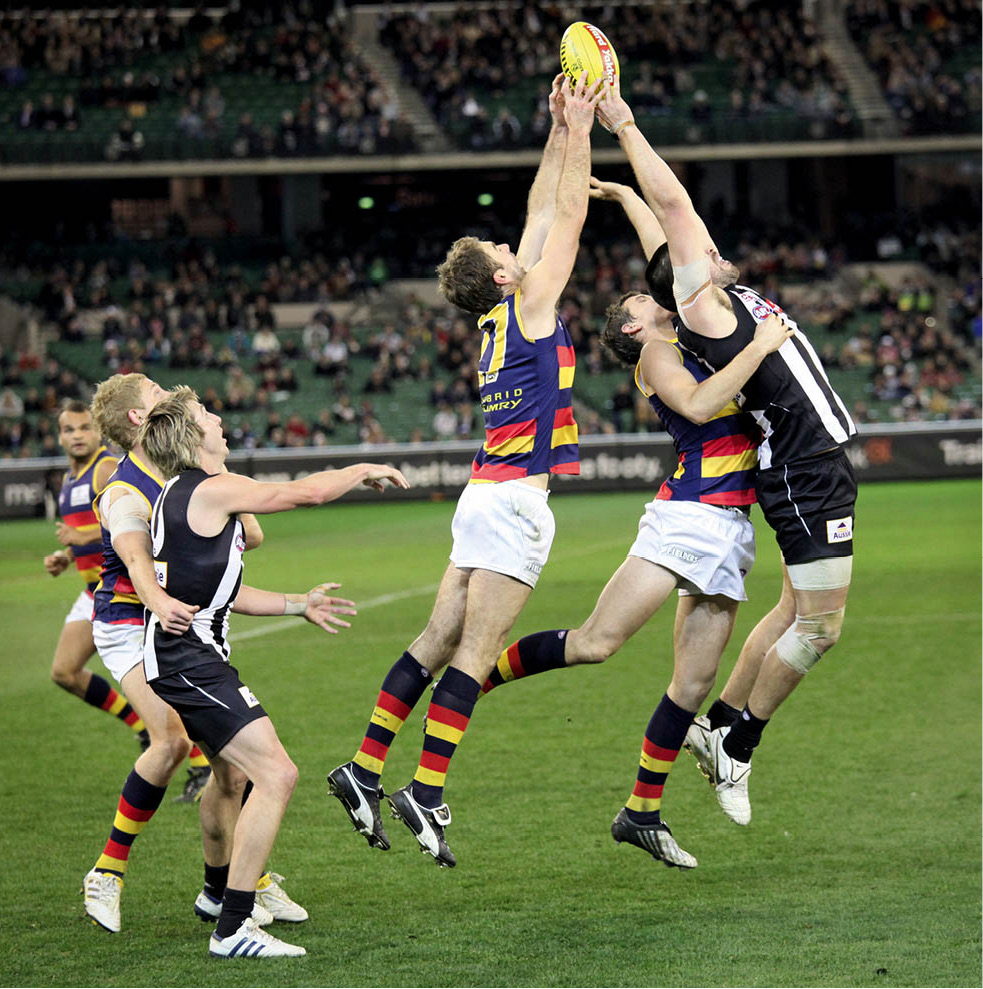
Aussie Rules football is a favourite sport
Dreamstime
A Laid-Back Culture
Even among such a wealth of natural wonders, it’s the people you meet who often leave the deepest impression. Australians generally are a friendly, no-nonsense bunch – direct and to the point. ‘G’day mate!’ is a cheery greeting often heard, sometimes followed by ‘How ya goin’, alright?’ Americans detect Cockney or Irish undertones in the Australian accent – yet some visitors from Britain or Ireland swear they can identify an American influence.
Many Australian terms are unique, as likely to baffle a Brit or American as a European. ‘Don’t come the raw prawn’ is a picturesque example, fading now from general usage. It means ‘Don’t try to pull the wool over my eyes.’ The happy-go-lucky expression ‘She’ll be right’ has been largely supplanted by ‘No worries, mate,’ but they both mean the same thing – ‘It will all be OK.’
The Aussie sense of humour can bewilder newcomers. It is peppered with ironic understatements and playful contradictions, such as: ‘She’s getting a bit warm’ (as the shade temperature reaches 40°C or 104°F); ‘You’re not wrong, mate’ (an expression of enthusiastic agreement); or ‘Now there’s a bloke who hates a drink’ (meaning that the man is a heavy drinker).
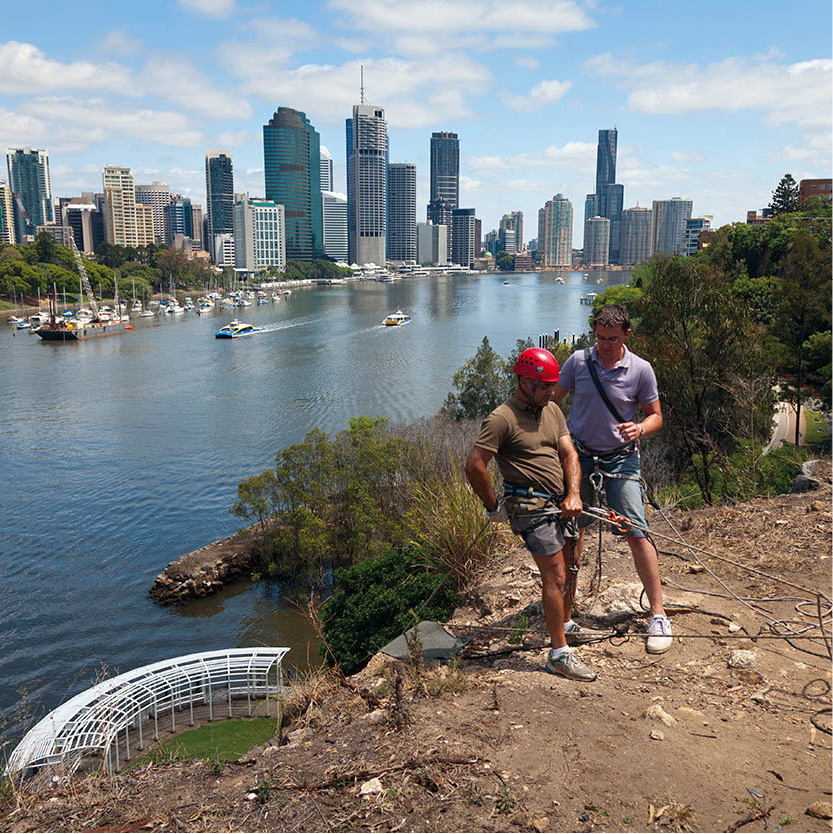
Australians are outdoorsy types
Peter Stuckings/Apa Publications
Australians have a love of outdoor enjoyment and a passion for sport, from the home-grown football code ‘Aussie Rules’ and cricket to relatively new sports like baseball and basketball. The sunny climate has a lot to do with this, but so does the perception that the sporting field (or jogging track) is a place where social barriers are easily overcome.
Australia has a high proportion of migrants, and the nation’s cultural mix is still evolving, but Britain and the US are still the main influences. British visitors often notice a California-style informality; American visitors are often surprised by the degree of Britishness remaining. At leisure, the majority of young Australians dress casually and watch American TV shows, but students at private schools continue to wear blazers and straw boaters like their counterparts in England. Cricket is played on local greens by teams sporting full whites, and on beaches and in backyards by bare-chested blokes in flip-flops.
Of course, ethnic and other rivalries do exist, and (given the country’s history and cultural mix), visitors may witness some surprisingly xenophobic sentiments expressed – not least in the media and by politicians – but most Aussies fundamentally believe people should be given ‘a fair go’, and not be judged on preconceptions of class, race or gender.